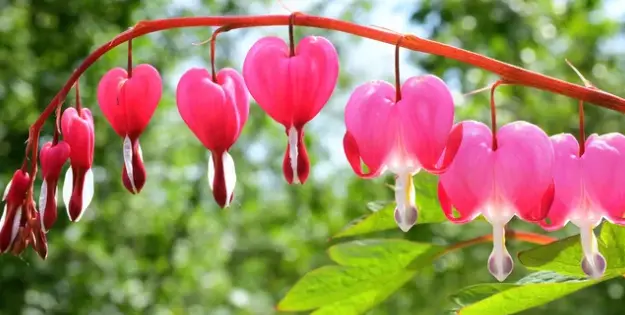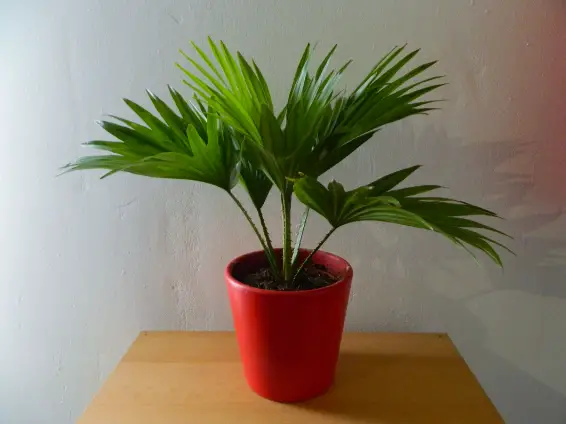Maximize Your Blooms: When to Plant Bleeding Hearts

Bleeding hearts are a popular herbaceous perennial plant known for their delicate, heart-shaped flowers that grow on long, arching stems.
They are a popular choice for gardens and landscapes, adding color and texture to a variety of settings.
Bleeding hearts are not only beautiful, but they also attract pollinators, provide shade and coverage, and are low-maintenance, making them a great addition to any garden.
The purpose of this blog post is to provide gardeners with information on the best time to plant bleeding hearts, including the factors that influence planting timing and how to plant and care for these delicate blooms.
This guide is designed to help ensure that your bleeding hearts thrive and provide you with years of beauty and enjoyment in your garden.

Understanding the Growing Conditions of Bleeding Hearts
Bleeding hearts prefer light to partial shade but can tolerate full shade in cooler climates. It is important to plant them in an area where they will receive at least 4 hours of direct sunlight each day.
Also, bleeding hearts prefer well-drained, rich soil with a slightly acidic pH between 6.0 and 7.0. Adding compost or organic matter to the soil can help improve its fertility and structure.
Bleeding hearts are hardy in USDA zones 3-9 and can tolerate temperatures down to -40°F. They prefer a cooler climate, and too much heat can cause the foliage to wilt. It is important to choose a location with good air circulation to prevent the plant from overheating.
Factors that Influence Planting Timing

Regional Climate
The best time to plant bleeding hearts will vary based on your regional climate. In regions with mild climates, you can plant in spring or fall, while in regions with harsh winters, it’s best to plant in the spring so that the plant can establish itself before winter arrives.
Soil Preparation
The timing of your planting will also be influenced by when you can prepare the soil for planting. If your soil is still frozen in the spring, you’ll need to wait until it thaws before planting.
Availability of Plants
The availability of bleeding heart plants will also play a role in when you can plant. Check with local nurseries or online retailers to see when they have plants in stock and plan your planting accordingly. It’s always a good idea to order plants early to ensure that you can plant them at the optimal time.
The Best Time to Plant Bleeding Hearts

Spring Planting
The best time to plant bleeding hearts in the spring is after the last frost date in your area. This timing will typically be in late April or early May. Planting in the spring gives the plant plenty of time to establish its roots and grow new foliage before winter arrives.
Fall Planting
Fall can also be a good time to plant bleeding hearts, although this is typically best for regions with mild climates. In regions with harsh winters, planting in the fall may not give the plant enough time to establish itself before the cold weather arrives.
Advantages and Disadvantages of Each Season
Planting in the spring allows the plant to establish itself and grow in the warmer weather while planting in the fall allows the plant to settle in and become established before winter arrives. However, spring planting can result in a reduced flowering period in the first year, while fall planting may not give the plant enough time to become established in regions with harsh winters. It’s important to consider your regional climate and soil conditions when choosing when to plant.
How to Plant Bleeding Hearts

1) Preparing the Soil
Before planting, amend the soil with compost or organic matter to improve its fertility and structure. Dig a hole that is deep enough to accommodate the root ball of the plant and mix in a balanced slow-release fertilizer.
2) Planting the Bulbs
Place the plant in the hole, making sure that the top of the root ball is level with the soil surface. Fill in the hole with soil, gently packing it down around the roots. Water the plant thoroughly after planting.
3) Watering and Mulching
Bleeding hearts prefer consistently moist soil, so it’s important to water them regularly, especially during dry periods. Mulching the soil around the plant with organic matter can help retain moisture and suppress weeds. Be sure to keep the mulch away from the base of the plant to prevent rot.
Aftercare for Bleeding Hearts
Watering
Bleeding hearts prefer consistently moist soil, so it’s important to water them regularly, especially during dry periods. Water deeply and allow the soil to dry out slightly before watering again.
Fertilizing
Fertilize bleeding hearts in the spring with a balanced slow-release fertilizer. Avoid over-fertilizing, as this can lead to excessive foliage growth at the expense of flowers.
Pruning
Prune off faded flowers and yellow foliage to encourage new growth and prolong the blooming period. Cut back the entire plant after it has finished flowering, to promote a fuller plant in the next growing season.
Overwintering
In regions with harsh winters, bleeding hearts may die back to the ground. Mulch the plant well before the first frost to help protect the roots, and cut back any remaining foliage after the first hard frost. In milder climates, the foliage may persist throughout the winter.
Disease and Pest Control
Bleeding hearts are generally low-maintenance and are not prone to a serious disease or pest problems. However, it’s important to monitor the plants regularly for signs of stress or damage, and take appropriate action if necessary.
Conclusion
Bleeding hearts are a beautiful and low-maintenance addition to any garden. By understanding the growing conditions and aftercare requirements of these plants, you can ensure that they thrive and bloom year after year.
Whether you choose to plant in the spring or fall, following the guidelines outlined in this post will help you achieve success with your bleeding heart plants. With proper care, these stunning flowers will add beauty and charm to your garden for many years to come.
References
It is important to provide credible sources to support the information presented in a blog post. Some reputable sources for information on bleeding hearts include:
- The Old Farmer’s Almanac: https://www.almanac.com/plant/bleeding-hearts
- The National Gardening Association: https://www.garden.org/plants/group/bleeding-hearts






